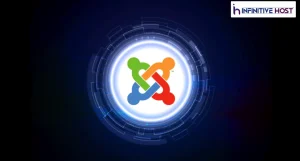An open-source CMS like Joomla gives users the impression that they can manage their whole site from a single, well-organised dashboard.
Despite the fact that this is true to a considerable extent, there are still additional factors that contribute to the administration of your site. Much of your site’s functionality, for instance, depends on the web server’s ability to execute requests from users. Its settings are hidden from the Joomla Administrator, and modifying the .htaccess file is typically required to get the desired behaviour.
However, what function does this file serve? And where would you look for it?
Read More: Top Benefits Of Joomla That Can Blow Your Mind!
What is ‘.htaccess?’

Do you know what Apache is? It’s a web server program that has been around for about thirty years yet is still regarded as a top choice.
Of course, you may use other web servers to run your Joomla project; but, Apache is open source and widely used, so you might not want to look elsewhere. In reality, an Apache server can handle your Joomla site without any problems. However, you need to set it up correctly if you want to get the most out of it. To do so, we must modify its settings files.
The httpd.conf file in the etc/httpd/conf directory is the main configuration file for Apache (though this may change based on your Linux distribution and version of the web server).
To alter the functioning of the web server, open httpd.conf in a text editor and insert the necessary directives.
Sadly, the httpd.conf file is not universally accessible. On a shared hosting server, for instance, hundreds of different projects may be active at once. You’ll have exclusive access to your own folder as the owner of a website.
In a perfect world, this wouldn’t happen. Without Apache directives, it’s often hard to accomplish crucial tasks like forcing the entire website to use HTTPS. This means that you can’t edit the configuration file for the web server (httpd.conf) while you work to tailor the server to the specific demands of your website.
When does .htaccess come to play?
For a single directory, an .htaccess file serves the same purpose as the more general httpd.conf file. It must be placed in the root folder of your website (the public_html folder if your site is hosted under your principal domain). Then, once it’s in place, you may update it in a text editor just like any other file on the server, and use the same Apache directives as in the main configuration file without worrying about breaking anything else.
You may use the .htaccess file to do several things, such as create a personalised 404 error page, password-protect a certain area of your site, or block access to the site from certain IP addresses. There are several directives that are platform independent and may be used on any website.
However, the .htaccess file serves a variety of tasks in many content management systems. And Joomla is not an exception.
.htaccess and Joomla
Aside from general server configuration, an .htaccess file may be used for two primary purposes in Joomla:
* Provide URLs that are easily indexed by search engines
Previous versions of Joomla had a quite awkward URL structure. It was filled with meaningless data like category and article IDs and didn’t provide any context for the page.
Search engine optimisation-wise, this was not ideal. URLs that are easy for humans to understand and include descriptive keywords are favoured by Google and other search engines.
In Joomla 1.5, a Search Engine Friendly URLs option was introduced to enhance the CMS’s search engine optimisation performance; in Joomla 1.6, this option was made active by default. However, even when activated, all URLs still include the index .php file. In order to get rid of it, you need to have the rewrite module of Apache enabled and add some specific directives to the .htaccess file.
* Protect your website against widely used exploits to boost its safety.
As long as you’re using the most up-to-date version of Joomla, you’ll be able to acquire fixes and close any newly found security issues. However, there are some vulnerabilities that can’t be patched away. They require a properly set up .htaccess file.
Several attacks, such as those that inject JavaScript code into SVG files, alter HTTP requests, or encode data in the URL, may be prevented with only a few well-placed directives.
What Is the Location of the .htaccess File for Joomla?

It is possible to make your own .htaccess file from scratch. All that’s required is familiarity with the Apache directives and a text editor.
Nonetheless, you shouldn’t shoulder all the responsibility by yourself. A text file named htaccess.txt is included in the normal Joomla installation. The file already exists in your site’s root directory and contains the directives necessary to enable search engine friendly URLs and prevent the vulnerabilities discussed above.
Simply renaming htaccess.txt to .htaccess will trigger these directives to take effect.
One of three methods can work to do this:
* Right-click the htaccess.txt file in the site’s root folder in an FTP client, and choose Rename.
* Using the File Manager that is provided by your web host
Methodically, they’re virtually indistinguishable. While the design of each file manager is unique, most make it possible to rename files by accessing the context menu.
* Through SSH
Although it is not required, the document root directory is typically the initial stop for site visitors. You may use this command if your site is hosted on your main domain:
$ cd ~/public_html
Finally, you need to use the mv command to rename htaccess.txt to .htaccess.
$ mv htaccess.txt .htaccess
Conclusion
In conclusion, you should make sure that you know where the .htaccess file is located in your Joomla installation. It’s typically in the root of the site, but it can also be found in the config folder. This file is used to control access to your site’s files and folders, so be sure to keep it up-to-date and protect it from unauthorised access.





